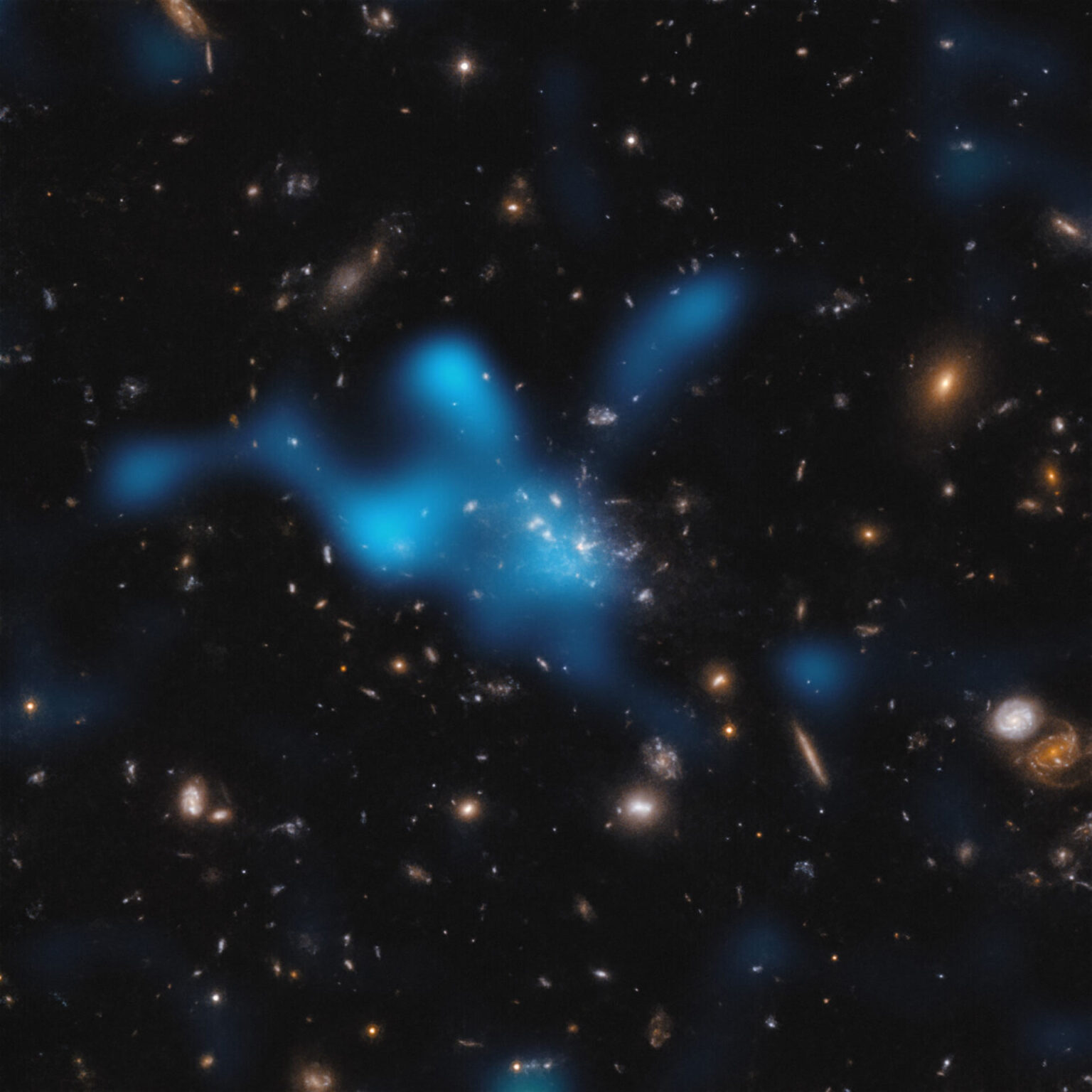A whole cluster of star systems is forming around the Spiderweb galaxy, which is located at a huge distance from us. This protocluster contains a giant reservoir of hot gas, from which new luminaries are formed.

Newborn Galaxy Cluster
A team of scientists from the University of Trieste recently published the results of a study of the processes occurring around the Spiderweb galaxy. Astronomers observed it using an array of ALMA radio antennas located in Chile.
The Spiderweb galaxy is located so far away from us that we see it as it is when the age of the Universe reaches only 3 billion years. It was at this time that the first clusters of galaxies began to form in it. They are among the largest objects observed by humans.
It has long been known about the Spiderweb galaxy that new star systems are forming around it. However, until now, scientists have not seen one of the main components of this process — hot gas filling the space between galaxies. It forms an intracluster medium (ICM).
Hot gas monitoring
It was ALMA who was able to find ICM in the cluster formed around the Spiderweb galaxy. It is possible to see it thanks to the Sunyaev-Zeldovich (SZ) effect. It consists in the fact that the relic microwave radiation, passing through a dense hot gas, slightly changes its frequency. Therefore, by observing it, you can detect peculiar “shadows”, which are actually giant clouds.
And such “shadows” were found around the Spiderweb galaxy. Which suggests that despite the fact that this cluster is just forming, the hot gas has already formed a dense ICM and continues to fall on the galaxies.
The reservoir of hot gas observed by scientists is really gigantic. And in the ten billion years that have really passed since the moment that we see now, it should have already turned into stars for the most part. The mass of the cluster at the same time should have grown at least twice.
According to phys.org
Follow us on Twitter to get the most interesting space news in time
https://twitter.com/ust_magazine

